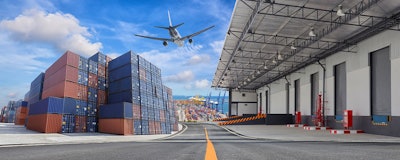
 Megan Ray Nichols
Megan Ray NicholsFor some time now, the growth and structure of the modern supply chain has facilitated the need for greater visibility and control. This partly attributes to the simple fact that newer tracking and management technologies afford greater visibility — and so much of the competition in the industry has focused on offering it. But it’s also because customer sentiment and behavior has changed a little.
Customers now demand to know the source of the products they buy, including processes and policies used to acquire the necessary materials. This is especially true of the modern food and grocery industry, where customers have an awful lot of concern as to the health and freshness of the foods they purchase.
Luckily, adoption of IoT or the Internet of Things has driven an industry-wide movement to more transparent, more efficient and strategic planning. That said, it’s not a simple process or implementation — you can’t use a bunch of IoT sensors to track products and shipments. Why? Well, technological limitations and various issues will mean a seamless monitoring system falls by the wayside. You need to be smart, strategic and calculated when adopting a modern supply chain monitoring system.
Adding IoT in an effective and accurate way takes more careful consideration than simply deploying various technologies and devices. There are many facets to the supply chain that need consideration when tracking movements and actions.
The primary question then becomes, how do you implement IoT effectively in your supply chain? What are some best practices and methods you should know?
1. Assess the Foundation of Your Supply Chain
Step one is to ensure you have an effective and reliable supply chain to begin with. If you choose to integrate or deploy IoT into an already flawed chain, you will run into a huge list of complications. Ultimately, it cannot be functioning separately across silos.
You should already have foundational technologies implemented, including Enterprise Resource Planning (ERP) and master data management (MDM) platforms. While IoT does present the potential to capture real-time relevant information across all stages of the supply chain, obstacles and setbacks will ruin a general overview lessening transparency. It helps to have your ERP integrated directly with your supply chain, so as to collect all the necessary data and information, delivering relevant, detailed reports about how your goods are passed along. You’ll want to understand as much as possible about your manufacturers, suppliers, delivery and distribution teams.
2. Find an Experienced Consultant or Vendor
No matter how much experience you have with modern devices, connected and smart technology and/or the implementation of IoT, it’s best to look for support from professionals when deploying enterprise and business-level configurations. IoT sensor implementation within your supply chain is a much more complex process, with varying tendrils and factors that you’ll want to consider. If you don’t have prior experience working with the technology in a supply chain environment, there’s a lot you can and will miss.
Simply put, you will not find an out-of-the-box solution that offers plug-and-play configurations. To make matters worse, IoT for enterprise — especially for a supply chain — is in its infancy. That means there’s still a lot of work to be done to properly configure and optimize systems, which should definitely be handled by someone with the appropriate experience.
Eventually, the technology may mature to the point where you don’t need a third-party or additional vendor, but that’s not the case currently. Find someone who knows what they’re doing both in the industry and with the related technologies.
3. Check With Suppliers and Existing Partners
Before you do a wide-scale rollout of new systems and technologies, it’s a good idea to coordinate with existing suppliers and vendors. Are they already using IoT within their own processes and platforms, for example? Is it something they cannot handle or manage at the current time? What expectations do they have compared to your own?
It’s obvious that any partners or suppliers you work with must be aligned with your own business goals, strategies and intentions. This alignment facilitates smooth collaboration and work processes and means everyone is on the same page, even when things go wrong. So, you’ll want to be sure the same support is available when implementing new technologies such as IoT sensors and the like.
4. Establish an IoT Data Analysis Strategy
Hands down, you can implement even the most effective and advanced data collection technologies, but if you have no way to make use of or process said data, it’s a completely useless system. You need to make sure you have a data analysis strategy in place, that will effectively extract and develop actionable intel from the data you bring in.
By nature, data coming in can help you advance and grow in many ways. You may look at information coming in to establish processes you never considered in the past or thought possible. However, you cannot do anything like this if you don’t understand the data coming in. And in regards to the kind of information flowing in from IoT equipment and sensors, the data is very raw. It will take time to process and structure the incoming information so you can make use of it.
Without reiterating the main point here, ensure you have a data analysis system, team and overall strategy in place before you deploy any IoT or data collection equipment. By the time the technology is out in the field, it’s already too late to come up with a viable analysis strategy. You want one in place already before that happens.
5. Taper Your Cost and ROI Expectations
Because of how young IoT is, start-up costs can be significant, and ROI projections are anecdotal as opposed to finite. What this means is that it’s difficult to really predict or gauge the ROI you’ll see from IoT implementation in your supply chain, at least in a more tangible sense.
You have to consider whether true transparency, real-time performance and activity monitoring is worth the investment. In other words, don’t look at the implementation of IoT as a financial benefit or boon. Instead, consider the positive outcome on performance, efficiency, customer relations and everything that goes hand-in-hand with improved supply chain transparency.
Megan Ray Nichols is a freelance science writer.























